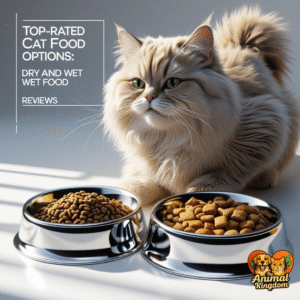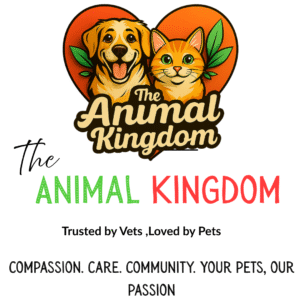
The Best Cat Food Options: Top-Rated Dry and Wet Food Reviews
Introduction to Cat Nutrition
Understanding the nutritional needs of cats is fundamental to ensuring their overall health and well-being. Cats are obligate carnivores, which means their diet must primarily consist of meat. This dietary requirement necessitates a sufficient intake of essential nutrients, including proteins, fats, vitamins, and minerals. Quality cat food should provide a balance of these elements, as they play critical roles in maintaining bodily functions, supporting growth, and boosting the immune system.
Proteins serve as the building blocks for a cat’s muscles, skin, and fur, while fats are a vital energy source and support healthy skin and coat condition. Key vitamins, such as A, D, and E, along with minerals like calcium and phosphorus, are equally important for various physiological processes, including vision, bone health, and metabolic functions.
In selecting the optimal cat food, one must consider the differences between dry and wet formulations. Dry cat food, often more convenient and cost-effective, can contribute to dental health by reducing plaque buildup. However, it may contain less moisture, which is significant as proper hydration is essential for a cat’s urinary tract health. Conversely, wet cat food is generally higher in moisture content, making it a good choice for ensuring adequate fluid intake and can be particularly beneficial for cats that struggle to drink enough water.
When determining the most suitable food for a cat, several factors should be considered, including age, weight, and specific health conditions. Kittens require nutrient-dense food to support their rapid growth, while senior cats may need formulations designed to address age-related concerns. Thoroughly assessing these factors can aid in making an informed decision regarding the type of cat food that aligns with the unique dietary needs of each individual cat.
Top-Rated Dry Cat Food Options
When selecting the appropriate dry cat food for your feline companion, it is vital to consider several aspects, including ingredient quality, nutritional value, and overall taste. Numerous brands stand out in the market for their commitment to quality and positive customer feedback. Among these, Hill’s Science Diet is frequently recommended for its balanced formulation, designed to cater to varying life stages and health needs. Its ingredients focus on high-quality proteins and essential nutrients that support a cat’s overall wellness.
Another noteworthy option is Royal Canin, known for its tailored diets designed for specific breeds and health conditions. This premium brand emphasizes scientific nutrition, offering grain-free formulas that prioritize digestibility. Pet owners often praise Royal Canin for its effectiveness in improving coat health and reducing sensitivities.
The Purina Pro Plan range deserves mention for its excellent value without compromising quality. It offers high-protein recipes formulated with real meat as the primary ingredient, catering to active cats. Purina Pro Plan’s diverse flavors ensure that your cat will find a taste they enjoy, garnering numerous positive reviews in terms of palatability.
Wellness CORE is another top contender featuring grain-free options rich in protein and omega fatty acids, promoting a healthy skin and coat. Pet owners commend Wellness CORE for its commitment to using natural ingredients, aiming for a holistic approach to pet nutrition.
While considering price points, it is advisable to examine both premium and budget-friendly alternatives. Brands like Blue Buffalo provide grain-free and special diet options that often receive high ratings without the steep price tag associated with some high-end brands. Evaluating customer feedback alongside ingredient quality can help streamline your decision-making process for selecting the top-rated dry cat food that aligns with your feline’s dietary requirements.
Top-Rated Wet Cat Food Options
When it comes to selecting the best wet cat food options, it is essential to consider various factors such as moisture content, palatability, ingredient sourcing, and nutritional balance. Wet cat food is increasingly recognized for its benefits, including enhanced hydration and a variety of flavors that cater to different feline preferences. Notably, high moisture content in wet food can help prevent urinary tract issues and ensure that cats receive adequate hydration, which is particularly crucial for those that may not drink enough water.
Several brands stand out in the wet cat food category due to their commitment to quality and affordability. For instance, Wellness CORE Grain-Free is popular for its rich protein sources and lack of fillers. Its formulas are designed to support healthy weight management while catering to the natural dietary needs of cats. Another commendable option is Blue Buffalo Wilderness, which features real meat as the primary ingredient, ensuring that cats receive essential amino acids for muscle maintenance. Additionally, it is enriched with vitamins and minerals, promoting overall well-being.
Specific formulations are available for cats with particular dietary needs. For example, if a cat has a sensitive stomach, Royal Canin Veterinary Diet offers a specialized range that incorporates easily digestible ingredients and prebiotics. Moreover, wet foods like Purina Pro Plan provide nutrition tailored to weight management, ensuring cats maintain a healthy lifestyle while enjoying flavorful meals.
In summary, selecting a top-rated wet cat food requires evaluating the nutritional composition, brand reputation, and specific dietary needs of your cat. By incorporating high-quality wet food into a cat’s diet, owners can improve hydration and provide a delightful eating experience. This investment in your cat’s nutrition can yield long-term health benefits and enhance their quality of life.
Conclusion: Choosing the Right Food for Your Cat
Selecting the right cat food is critical for ensuring the optimal health and well-being of your feline companion. With numerous options available, including both dry and wet varieties, it is essential to assess your cat’s specific needs and preferences. First and foremost, consider your cat’s age, activity level, and any special dietary requirements they may have. Kittens, for instance, require more calories and specific nutrients for growth, while senior cats may benefit from diets that support joint health and digestion.
Additionally, evaluating ingredients is vital. Look for foods that list high-quality protein sources as the primary ingredient, and avoid those with excessive fillers or artificial additives. Understanding any food allergies or sensitivities your cat may experience can also guide your selection, ensuring you choose an option that promotes optimal health. Be observant of your cat’s reaction to new food; if signs of discomfort or allergic reaction occur, discontinue immediately.
Transitioning between different types of cat food should be done gradually over a week to minimize gastrointestinal upset. It is advisable to introduce small amounts of the new food mixed with their current diet, slowly increasing the proportion of new food. This method not only eases the transition but also allows you to monitor your cat’s acceptance of the new dietary option.
Lastly, consulting with a veterinarian can provide personalized insights into your cat’s dietary needs. A vet can recommend specific brands or nutritional strategies that cater to your cat’s unique requirements. By taking these steps, you can confidently choose the best cat food to support your pet’s health and happiness for years to come.
Find the best cat food for your pet:
The Best Cat Food Options: Top-Rated Dry and Wet Food Reviews

